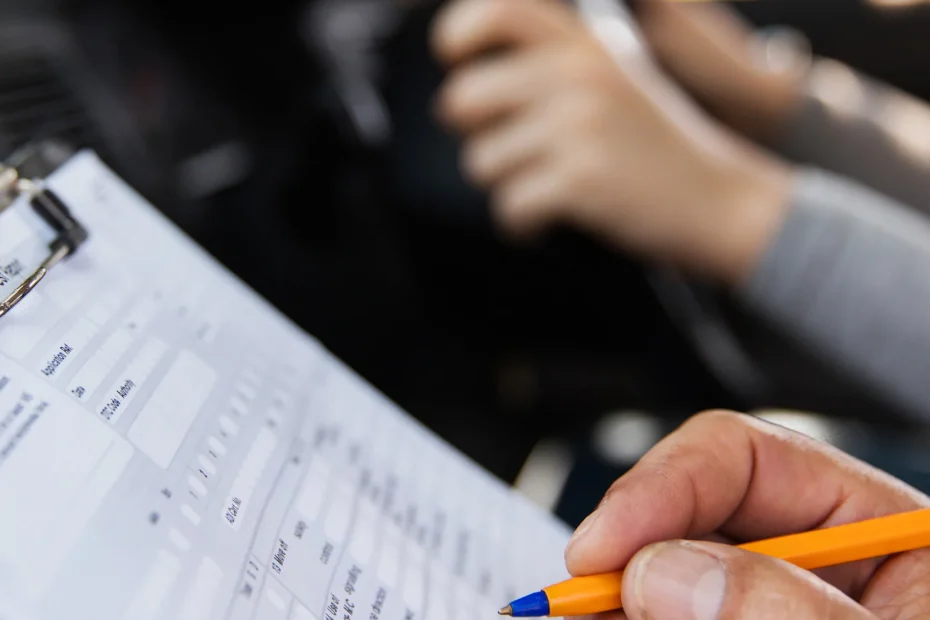When you are learning to drive, there are several key skills you should master. You can learn these skills during an online drivers ed course with qualified instructors. New drivers should learn to park, reverse, and drive on the freeway to make sure they are competent enough to safely drive on the road.
Are you thinking about learning how to drive? Then check out the driving skills you should master here:
Contents
1. Car Parking
Parking a car is a beneficial and essential driving skill you learn from an online drivers ed.
As a beginner, you should know how to park your car on a curb, street, and parking space. Parking can be a little difficult in the beginning, but a drivers ed course will prepare you well. There are straight parking and diagonal parking spaces, so when parking a car, you should learn:
- Parking Between Two Vehicles: It involves moving your car to the center of the parking location. If the parking lot only allows one way of traffic, move your vehicle to the opposite side of the parking space. This creates more space for you to turn.
Make sure your vehicle’s front bumper is halfway close to the parking space. Turn the steering in the same direction as the parking spot and slowly move your car closer to the area. Check the sides and front of the vehicle to ensure spaces between you and other cars. Keep moving closer until the vehicle is successfully in the parking space.
- Parking Next to a Curb: Parking near a curb requires careful maneuvering between vehicles. Move your car to the middle of the spot where you’ll be parking. Put the vehicle in reverse and slowly move into the parking spot. Make sure that your foot is on the brake although the parking process.
Back into the parking spot. When you slowly back your vehicle into a parking spot, it gives you more time to readjust the distance between your car and its parking space. Make sure you don’t hit or scrape other cars by adjusting your mirrors.
Move closer to the curb by straightening your tires and moving the steering in the opposite direction of the curb.
2. Reversing a Car

One of the skills you need to learn is reversing a car. Check to make sure that nothing is blocking the back and sides of your vehicle before reversing. Adjust your mirrors and know where all the buttons are located and if they are functioning. Turn on the headlights and signals to communicate your intentions to other road users. Put your right foot on the brake and your left foot on the clutch if it’s a manual transmission vehicle.
When reversing a car, remember to maintain a safe distance between you and the next vehicle.
3. Merging Into Traffic
Taking an online drivers ed teaches you how to merge into traffic from multiple lanes. To successfully merge into another lane, check your surroundings to make sure that no cars are beside you. When you notice an opening, signal your intent to connect with the new route. Increase the car’s speed as you get nearer to the acceleration lane. Adjust your car’s speed as you merge into the lane.
Types of Merging

Different highways and freeways will offer different types of merging methods. Slip road merging prioritizes traffic on the highway over traffic joining the highway. For this type of merging, you should accelerate to the speed of traffic and join in gaps. Some highways will have a new lane appear, which requires no merging.
The early merge method encourages drivers to merge as early as possible, even before the merge lane ends. Areas that use this method will have signs that warn drivers of the lane ending and so you need to merge before reaching the end.
Many people agree that the safest method of merging is the late merge, where drivers don’t merge until they’ve reached the end of the lane and then alternate between cars on the road. This is often called zipper merging. It requires matching speeds and being aware of your place on the road. The intent of this merge is to reduce backups on the road.
1. Driving On the Highway
Understanding the type of roads you are driving on is a beneficial driving skill to have. Driving on gravel differs from going on a tarred road or rocky terrains. You will be able to drive safely during all seasons if you have practiced on different terrain.
When driving on a highway, you should know how to drive near trucks and large vehicles. It would help if you prepared for driving on the highway during rush hour. It can be difficult to drive on a heavily congested road and higher speed limits. When you’re on the highway, you should know when to slow down and when to speed up.
2. Driving in Different Weather

Learning how to drive during harsh weather conditions is a good skill when you’re starting. When you take an online drivers ed, you realize that each weather condition requires different maneuvering skills. The slightest mistake made when driving through adverse conditions can be disastrous.
Many drivers, especially news one, struggle to drive in snowy and icy conditions. The best advice is to go slow. If you begin to slide, take your foot off of the accelerator, and turn your wheel in the opposite direction of your sliding car. This should also your tires to regrip the road and you can regain control. When braking on icy roads, do not hold or slam your foot on the brake. Instead, do soft, short pumps until you come to a complete stop. This prevents sliding.
3. Online Drivers Ed Practice Makes Perfect
Regular driving builds confidence and helps you adjust your current driving skills. Feel free to go at your own pace. You will need to understand the basics as it is the best way to drive safely. You can practice the skills you’ve learned in online drivers ed by taking daily drives on different terrain.
Find a drivers ed course that is tailored to your needs. If you want more time to practice these skills, an online course is perfect for you. Online courses can be adjusted to your schedule and allow you to repeat areas that you want more training on. You won’t have to worry about getting out on the road before you’re ready. Find out more about driving skills here.
